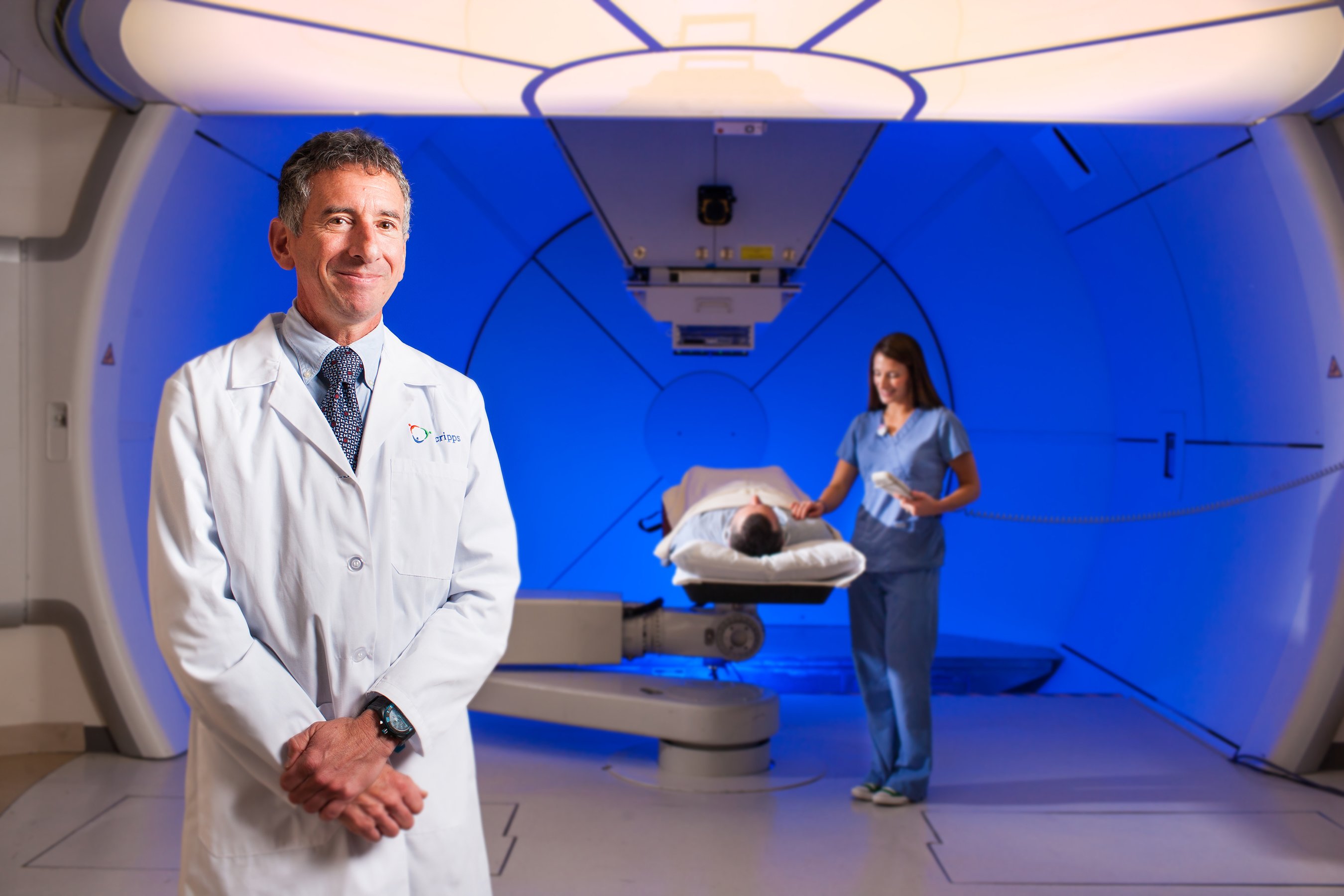
February 20, 2014 — Until recently, cancer patients looking for a precise form of proton radiation therapy – "pencil-beam scanning" – had to narrow their search to about a half dozen centers in the United States that offer this treatment on a limited basis.
The Scripps Proton Therapy Center in San Diego, Calif., is the first proton center in the United States to treat patients exclusively with this technology, in every treatment room.
"Pencil-beam scanning enables doctors to treat larger and more complicated tumors, while sparing more normal tissue and producing about one-tenth as many carcinogenic neutrons compared to traditional proton delivery," said Carl Rossi, M.D., the center's medical director. "We're essentially breaking down each tumor into thousands of tiny cubes, and then 'painting' each individual cube with radiation, layer by layer."
Scripps Proton Therapy Center is the nation's 15th proton facility. When fully operational, the $220 million center will have the capacity to treat up to 2,400 patients annually. Scripps Health provides the center's clinical management and Scripps Clinic oversees the medical services. Advanced Particle Therapy is the center's developer and owner.
'Painting' Radiation Onto Tumors
Today, most proton therapy is delivered using the traditional "passive scatter" approach, in which the beam is shaped to match the tumor after exiting the treatment nozzle. With passive scatter, the beam passes through specially manufactured devices to form the beam's height, width and penetrating depth, before entering the patient.
Pencil-beam scanning electromagnetically shapes the beam inside the nozzle via computerized data files, developed from 3-D models of patients' tumors. Many say it is far more accurate than passive scatter.
"Using pencil beam to treat tumors is like using a very fine paint brush to apply the radiation, whereas earlier proton technology is more like using a can of spray paint," Rossi said.
A Look Inside The Center
Scripps Proton Therapy Center is designed with five treatment rooms, three of which include gantries, which rotate around the patient 360 degrees to allow treatment from any direction. The center's other two rooms are designed with fixed-beam machines. The facility is currently treating patients in select rooms and projects commissioning and clinical use of all treatment rooms in 2014. The center offers on-site access to the imaging technology needed for accurate tumor targeting, including CT and PET-CT scanners and an MRI machine.
The 102,000-square-foot facility will also service Rady Children's Hospital-San Diego and UC San Diego Health System, whose affiliations with Scripps Health was announced at the center's grand opening.
Less Healthy Tissue Affected
Compared to X-ray technology, proton therapy (pencil beam and passive scatter) treats patients with a substantially lower total radiation dose to normal tissue. For example, compared to X-rays, a proton beam can effectively target prostate cancer tumors with less exposure to the bladder, rectum and small intestine. With breast cancer, it can treat the left breast without exposing the heart to radiation. And with lung cancer, protons will spare more of the patient's spinal cord, esophagus and bone marrow.
"As more survivors are moving on to a life after cancer, we need to be cognizant of the effects that unnecessary radiation exposure may have on their health and well-being years down the road, such as chronic disease or treatment-related cancers," said Jeff Bordok, CEO of Advanced Particle Therapy. "The precision offered by proton therapy means patients may enjoy a healthier survivorship later."
Varian Medical Systems of Palo Alto, Calif., developed, installed and validated the center's ProBeam proton delivery system.
For more information: www.scripps.org



 December 11, 2025
December 11, 2025 









